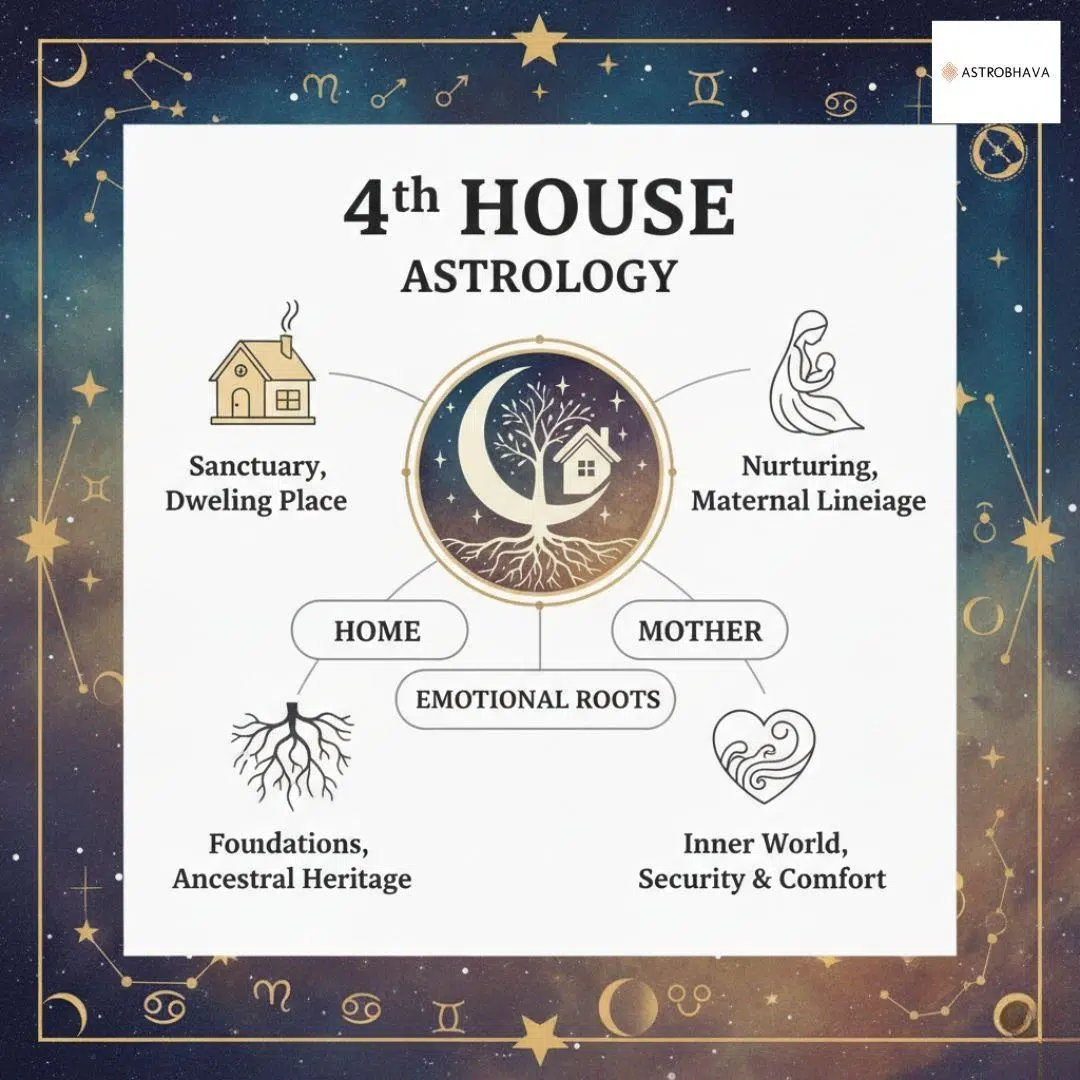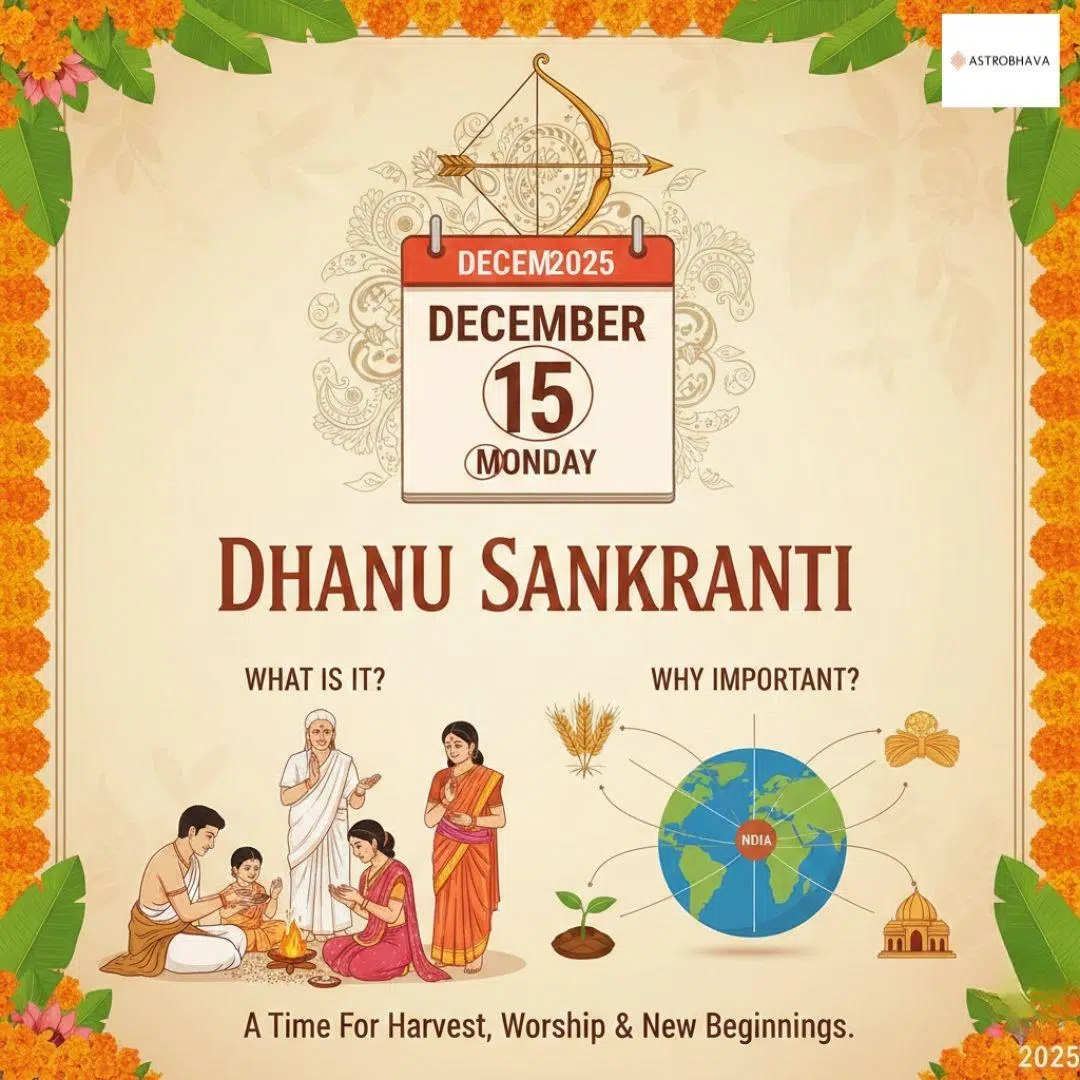Shattila Ekadashi Vrat Katha: Great Story Behind the Fast

Shattila Ekadashi is a revered Hindu observance celebrated with devotion and spiritual fervor. It falls on the 11th day of the Krishna Paksha (waning moon phase) in the month of Magha and holds immense significance. Devotees observe the fast and perform various rituals to seek Lord Vishnu’s blessings, cleanse their souls, and attain spiritual upliftment. This blog delves into the Shattila Ekadashi Vrat Katha, its rituals, and its importance, offering insights into its sacred essence.
What is Shattila Ekadashi?
Shattila Ekadashi is a sacred observance in the Hindu calendar, falling on the eleventh day (Ekadashi) of the Krishna Paksha during the Magha month. Renowned for its spiritual significance, this day is dedicated to Lord Vishnu, the preserver of the universe. The term “Shattila” is derived from the Sanskrit words “Shat” (six) and “Tila” (sesame seeds), signifying the six ways in which sesame seeds are used during this auspicious occasion: consumption, donation, bathing, offering in rituals, mixing with water, and incorporating into dishes.
“Seek the divine blessings of lord garuda– Book your homa now”
The Ekadashi vrat (fast) is celebrated with immense devotion by millions of devotees seeking to cleanse their minds, bodies, and souls. Observing this vrat is believed to purify one’s karma, ward off sins, and provide liberation (moksha). According to scriptures, the day emphasizes acts of charity and selflessness, encouraging the donation of sesame seeds and other essential items to the needy.
The spiritual benefits of Shattila Ekadashi are unparalleled. Devotees believe that by performing rituals such as Vishnu Puja, Vishnu Homam, and reciting Vishnu Sahasranama, one can attain divine blessings, prosperity, and peace. This day also highlights the importance of a sattvic (pure) lifestyle, emphasizing the connection between physical and spiritual well-being. In essence, Shattila Ekadashi transcends mere ritualistic practice, serving as a day for introspection, devotion, and spiritual growth.
The Origin Story: Shattila Ekadashi Vrat Katha Explained
The vrat katha (story) associated with Shattila Ekadashi is a compelling tale that underscores the power of charity and devotion. According to the Padma Purana, there was once a wealthy but miserly woman who never shared her riches or food with the less fortunate. Despite her material wealth, she led an unfulfilled and sorrowful life.
One day, Lord Krishna, in disguise, visited her home to test her generosity. When He asked for food, she reluctantly gave Him a ball of mud. Seeing her lack of compassion, Lord Krishna decided to teach her a lesson. Upon her death, she found herself in a realm where she faced severe hunger and deprivation.
Realizing her past mistakes, she prayed fervently to Lord Krishna for redemption. Moved by her sincere repentance, He advised her to observe the Shattila Ekadashi vrat with complete devotion. Following His instructions, she performed the rituals, including donating sesame seeds, offering prayers to Lord Vishnu, and practicing selflessness. As a result, she was freed from her karmic burdens and attained spiritual liberation.
This story emphasizes the importance of charity, humility, and devotion. It teaches that true wealth lies not in material possessions but in acts of kindness and generosity. Observing the Shattila Ekadashi vrat helps devotees internalize these values and leads them closer to divine grace.
Why Sesame Seeds Play a Pivotal Role in Shattila Ekadashi
Sesame seeds, or “til,” hold immense religious and spiritual importance in Hindu rituals, particularly on Shattila Ekadashi. These seeds are not only a dietary staple but are also considered sacred in Vedic traditions. Their inclusion in the rituals symbolizes purity, selflessness, and the eradication of negative karma.
On Shattila Ekadashi, sesame seeds are used in six specific ways to maximize their spiritual benefits:
- Bathing: Devotees add sesame seeds to their bathwater, symbolizing the cleansing of sins and impurities.
- Consumption: Sesame seeds are included in sattvic meals to promote physical and spiritual health.
- Donation: Offering sesame seeds to the needy signifies selflessness and earns divine blessings.
- Puja Offerings: Sesame seeds are offered to Lord Vishnu during the puja as a symbol of devotion.
- Havan: The seeds are used in fire sacrifices (homa) to please the deities.
- Water Mixing: Drinking water mixed with sesame seeds is believed to purify the body and soul.
The significance of sesame seeds can be traced to their ability to ward off negative energies and promote positivity. Their association with Shattila Ekadashi stems from the belief that they embody purity and spiritual potency. By incorporating sesame seeds into the rituals, devotees align themselves with the divine, ensuring prosperity, peace, and liberation from past sins.
The Rituals and Customs of Shattila Ekadashi: Step-by-Step Guide
Observing Shattila Ekadashi involves a series of sacred rituals performed with utmost devotion. Here is a comprehensive guide:
- Preparation: The rituals begin on Dashami (the tenth day). Devotees abstain from consuming grains, garlic, and onion and prepare themselves mentally and physically for the vrat.
- Morning Bath: On Ekadashi, devotees bathe early in the morning using water mixed with sesame seeds. This act symbolizes purification and renewal.
- Vow: After bathing, devotees take a sankalpa (vow) to observe the fast with sincerity.
- Puja: Devotees worship Lord Vishnu by offering sesame seeds, fruits, flowers, and Panchamrit (a mixture of milk, yogurt, honey, ghee, and sugar).
- Vishnu Sahasranama: Reciting the Vishnu Sahasranama and other hymns dedicated to Lord Vishnu enhances the sanctity of the vrat.
- Havan: Performing a fire sacrifice with sesame seeds and chanting Vedic mantras purifies the environment and attracts divine blessings.
- Charity: Donating sesame seeds, clothes, food, and other essentials to the needy is a key aspect of the observance.
- Fasting: Devotees abstain from grains and certain vegetables, consuming only fruits and water. Some observe a nirjala (waterless) fast.
- Night Vigil: Staying awake and meditating on Lord Vishnu through bhajans and kirtans is a recommended practice.
- Parana: The fast concludes on Dwadashi (the twelfth day) with prayers and the consumption of water sanctified by the Lord’s blessings.
Following these rituals with faith and dedication not only purifies the soul but also attracts divine grace, leading to spiritual fulfillment.
Common Mistakes to Avoid While Observing Shattila Ekadashi Vrat
Devotees observing the Shattila Ekadashi vrat should be mindful of certain dos and don’ts to ensure the vrat’s spiritual sanctity is upheld:
Dos:
- Follow the Ekadashi vrat rules diligently, such as abstaining from grains and pulses.
- Engage in devotional activities like Vishnu Japa, reading scriptures, and performing puja.
- Offer charity with a pure heart, emphasizing selflessness.
Don’ts:
- Avoid consumption of tamasic foods such as onions and garlic.
- Refrain from negative actions, thoughts, or words during the vrat.
- Do not break the fast at an inappropriate time; consult the Muhurat for guidance.
The Benefits of Observing Shattila Ekadashi Vrat for Devotees
The observance of Shattila Ekadashi offers both spiritual and material benefits:
- Cleansing of Sins: The fast and rituals cleanse past sins and negative karmas.
- Enhanced Devotion: Devotees feel a stronger connection to Lord Vishnu through Vishnu Puja and Japa.
- Attaining Moksha: By performing good deeds and selfless acts, devotees inch closer to liberation.
- Blessings of Prosperity: Charity and devotion bring material prosperity and inner peace.
“Illuminate Your Life with Divine Light – Book Sathyanarayana Puja Now!”
By incorporating rituals like Vishnu Homam and engaging in acts of kindness, devotees amplify the spiritual significance of the day, making it a transformative experience.
Why Perform Vishnu Japa and Vishnu Homam on Shattila Ekadashi?
Shattila Ekadashi is not only a day of fasting and charity but also a powerful opportunity for spiritual practices like Vishnu Japa and Vishnu Homam. These rituals hold immense significance in enhancing the spiritual and transformative energy of this sacred day.
Benefits of Vishnu Japa
Vishnu Japa involves chanting the sacred names and mantras dedicated to Lord Vishnu, such as “Om Namo Bhagavate Vasudevaya.” This practice carries profound spiritual and psychological benefits:
- Focus and Mindfulness: Chanting helps focus the mind, reducing distractions and stress.
- Connection with the Divine: Repeating Vishnu’s names deepens the bond with the divine and strengthens faith.
- Karmic Cleansing: The vibrations generated through chanting are believed to cleanse past karmas and negative energies.
- Inner Peace: Regular Japa creates a sense of calmness and tranquility, aligning the devotee with cosmic energies.
Significance of Vishnu Homam
Vishnu Homam, or the sacred fire ritual, is a pivotal spiritual practice performed on Shattila Ekadashi. It involves offering oblations to Lord Vishnu through the holy fire while chanting Vedic hymns. The ritual is believed to:
- Invoke Divine Blessings: The Homam invokes Lord Vishnu’s blessings, promoting prosperity and well-being.
- Purify the Environment: The fire purifies the surroundings, removing negative energies and promoting positive vibrations.
- Fulfill Desires: Performing Homam with devotion and the right intent is said to help fulfill personal and spiritual desires.
- Enhance Devotion: The ritual strengthens devotion and creates a divine connection that inspires spiritual growth.
Amplify the Spiritual Significance of Shattila Ekadashi
Combining fasting, charity, and these sacred rituals on Shattila Ekadashi amplifies the day’s spiritual significance. While the fast and acts of kindness purify the body and soul, Vishnu Japa and Vishnu Homam elevate devotees’ spiritual consciousness. Together, they create a holistic approach to honoring Lord Vishnu and reaping the divine rewards of this auspicious day.
Significance of Fasting on Shattila Ekadashi: Beyond the Physical Realm
Fasting on Shattila Ekadashi is more than just an act of abstaining from food; it is a spiritual practice that aligns the body, mind, and soul. In Hindu tradition, fasting is considered a means of purifying one’s inner self and achieving spiritual growth. Shattila Ekadashi, in particular, emphasizes the virtues of self-control, devotion, and charity.
This vrat is believed to cleanse one’s sins and pave the way for liberation (moksha). By fasting, devotees demonstrate their detachment from worldly pleasures and focus entirely on divine worship. The physical benefits of fasting, such as detoxification and increased energy levels, complement its spiritual significance, creating a harmonious balance.
Devotees are encouraged to meditate, recite mantras, and perform acts of kindness while fasting. These practices amplify the benefits of the vrat, fostering a sense of inner peace and divine connection. Ultimately, fasting on Shattila Ekadashi serves as a reminder of the importance of discipline, gratitude, and spiritual dedication in daily life.
How to Perform Vishnu Puja on Shattila Ekadashi for Maximum Blessings
Performing Vishnu Puja on Shattila Ekadashi is a deeply rewarding experience that strengthens one’s connection with the divine. Here are the steps to conduct the puja:
- Cleanse the Space: Begin by cleaning the puja area and setting up an altar with an idol or image of Lord Vishnu.
- Preparation: Gather essential items like sesame seeds, flowers, incense sticks, lamps, and Panchamrit.
- Invocation: Light a lamp and incense sticks, and chant mantras to invoke Lord Vishnu’s presence.
- Offerings: Present offerings such as sesame seeds, fruits, flowers, and sweets to the deity. Sprinkle holy water (Gangajal) around the altar.
- Mantra Chanting: Recite the Vishnu Sahasranama or other sacred hymns dedicated to Lord Vishnu.
- Aarti: Perform an aarti (ritual of waving light) while singing bhajans in praise of Lord Vishnu.
- Prayers: Offer heartfelt prayers, seeking blessings for peace, prosperity, and spiritual growth.
- Meditation: Conclude the puja by meditating on Lord Vishnu’s form and virtues.
Performing this puja with sincerity and devotion enhances its effectiveness, ensuring divine grace and fulfilling one’s desires.
Rituals of Shattila Ekadashi
Shattila Ekadashi is marked by a variety of rituals:
Fasting (Vrat)
Observing a fast on this day is considered auspicious. Devotees abstain from grains and pulses, consuming fruits, milk, and specially prepared dishes like sesame-based sweets. The fast signifies self-purification and devotion.
Vishnu Puja
Vishnu Puja is an integral part of Shattila Ekadashi. Devotees offer prayers to Lord Vishnu, decorate idols with flowers, and light lamps to seek His blessings for prosperity and spiritual growth.
Vishnu Japa and Homam
Chanting the sacred names of Lord Vishnu (“Vishnu Japa”) and performing Vishnu Homam are significant practices. These rituals invoke divine blessings and create a spiritually charged environment.
Charity with Sesame Seeds
On Shattila Ekadashi, charity holds a special place. Devotees distribute sesame seeds, clothes, food, and other essentials to the needy, believing it purifies their karma and brings peace.
Conclusion: The Eternal Relevance of Shattila Ekadashi in Modern Times
Shattila Ekadashi remains a beacon of spiritual wisdom and devotion in today’s fast-paced world. By observing this sacred day, devotees not only honor ancient traditions but also cultivate virtues like selflessness, compassion, and devotion. The timeless message of Shattila Ekadashi – to embrace charity and spiritual growth – continues to inspire and uplift countless lives. Through acts of kindness, unwavering faith, and dedicated rituals, devotees can harness the transformative power of this auspicious day, finding peace and prosperity in their spiritual journey.
Unlock the profound spiritual benefits of Shattila Ekadashi by participating in guided rituals and consultations with AstroBhava’s expert astrologers. At AstroBhava, we offer personalized guidance for observing Ekadashi rituals, performing Vishnu Puja, and understanding the deeper significance of this sacred day. Visit AstroBhava today and enrich your spiritual journey with expert insights and services.
FAQs About Shattila Ekadashi
1. What is the importance of Shattila Ekadashi?
Shattila Ekadashi emphasizes the virtues of charity and devotion, promoting self-purification and spiritual growth.
2. When is Shattila Ekadashi 2025?
Shattila Ekadashi will be observed on 25 January in 2025. The exact timings can be confirmed through an authentic Hindu Panchang.
3. What are the key rituals of Shattila Ekadashi?
Key rituals include fasting, Vishnu Puja, Vishnu Japa, performing Homam, and offering charity, particularly with sesame seeds.
4. Why are sesame seeds significant on Shattila Ekadashi?
Sesame seeds symbolize purification and generosity. They are used in rituals and charity, representing selflessness and spiritual cleansing.
5. Can I observe Shattila Ekadashi if I cannot fast?
Yes, you can participate in other rituals such as Vishnu Puja, charity, and chanting Vishnu’s names if fasting is not possible.
6. How does Shattila Ekadashi help in spiritual growth?
Observing the vrat cleanses negative karma, enhances devotion, and brings the devotee closer to Lord Vishnu, paving the way for spiritual upliftment.
Categories
- 10th House meaning
- 12th house astrology
- 12th House Moon meaning
- 1st house in astrology
- 2025 astrology
- 2025 festivals
- 2025 planetary movements
- 27 nakshatras
- 2nd house astrology finance
- 2nd house in astrology
- 2nd house in astrology explained
- 3rd house in astrology
- 4th house in astrology
- 9th house moon astrology
- abundance mantra
- Antardasha
- aries personality
- aries traits
- aries zodiac sign
- ascendant in astrology
- astro guide
- astro predictions 2025
- astro remedies
- astro tips
- Astrobhava
- Astrobhava astrology
- Astrobhava blog
- astrological effects
- astrological guidance
- astrological love compatibility
- Astrological love languages
- astrological planets
- Astrological Remedies
- astrology
- astrology 2025
- astrology 2026
- astrology 2nd house meaning
- astrology basics
- astrology benefits
- astrology calculator
- astrology career path
- astrology career prediction
- astrology compatibility
- astrology consultation
- astrology for business
- astrology for wealth
- astrology gemstones
- astrology guide
- Astrology Guides
- astrology houses
- astrology houses guide
- astrology insights
- astrology love guide
- astrology lucky color
- astrology predictions
- astrology remedies
- astrology remedies for job
- Astrology Remedies for Wellness
- astrology rituals
- astrology solutions
- astrology soulmate signs
- astrology sun planet
- astrology tips
- auspicious yogas
- Bhagavad Gita Jayanti
- birth chart
- birth chart analysis
- birth chart planets
- birth chart reading
- birth star matching
- business astrology
- business partnership astrology
- business success astrology
- career astrology
- Career Astrology & Personal Growth
- career astrology remedies
- career by nakshatra
- career growth remedies
- career stagnation remedies
- color astrology
- communication astrology
- communication planet
- compatibility chart
- Cosmology
- daily mantras
- Dasha
- dasha period calculator
- Dasha system
- Dhanu Sankranti 2025
- divine blessings
- dosha
- dosha remedies
- dreams interpretation
- dreams meaning
- Ekadashi benefits
- Ekadashi rituals
- Ekadashi vrat
- emotional astrology
- emotional compatibility
- emotional growth astrology
- emotional healing
- entrepreneurial astrology
- Festivals & Vedic Rituals
- financial astrology
- fire sign aries
- first house meaning
- fourth house meaning
- Gaja Kesari Yoga
- Gaja Kesari Yoga benefits
- gemstone astrology
- gemstone benefits
- Gita Jayanti 2025 astrology
- Gita Jayanti astrology
- hindu astrology
- Hindu calendar 2025
- Hindu fasting
- Hindu Festivals
- Hindu festivals 2025
- Hindu festivals astrology
- hindu rituals
- Homa and Fire Rituals (Yagna)
- home and family astrology
- horoscope
- horoscope 2025
- horoscope analysis
- horoscope colors
- horoscope correction
- horoscope guide
- horoscope insights
- horoscope matching
- horoscope reading
- horoscope remedies
- horoscope yoga benefits
- Indian astrology
- insightful trade
- Japa
- job astrology
- Jupiter Moon yoga
- kundli matching
- kundli reading
- lagna in astrology
- Latcharchana remedies
- list of 27 nakshatras
- lord of nakshatra
- love astrology
- love horoscope
- love match astrology
- lucky color for zodiac signs
- lucky gemstones
- lunar rituals
- lunar signs
- Mahadasha
- Mahadasha Calculator
- mahadasha effects
- Mahadasha periods
- Mahadasha prediction
- Mahadasha remedies
- mahadasha results
- Makar Sankranti
- manifestation mantras
- Mantra
- mantra chanting tips
- mantras for success 2026
- Margashirsha puja
- Margashirsha Purnima 2025
- Margashirsha rituals
- Marriage Auspicious Day
- marriage matching
- match making astrology
- Mercury direct 2025
- mercury direct meaning
- Mercury in astrology
- Mercury planet
- Mercury Retrograde
- Mercury Retrograde dates
- Mercury Retrograde effects
- mindset improvement
- Moon and profession
- Moon astrology
- Moon astrology insights
- Moon effects in astrology
- Moon house meaning
- Moon in 10th House
- Moon in 11th House
- Moon in 12th House
- Moon in 6th House
- Moon in 6th House effects
- Moon in 6th House remedies
- Moon in 7th House
- Moon in 7th House astrology
- Moon in 7th House effects
- Moon in 7th House love
- Moon in 7th House marriage
- Moon in 7th House meaning
- Moon in 7th House remedies
- Moon in 8th House
- moon in 8th house love
- moon in 8th house marriage
- moon in 9th house
- moon in 9th house effects
- Moon in Astrology
- moon in eighth house effects
- Moon in Eleventh House meaning
- moon in ninth house meaning
- Moon in Sixth House astrology
- Moon in tenth house career
- moon meaning
- Moon placement
- Moon placement in 7th House
- nadi astrology
- Nakshatra and Mahadasha
- nakshatra astrology
- nakshatra calculator
- nakshatra career guide
- nakshatra characteristics
- Nakshatra compatibility
- nakshatra guide
- nakshatra healing
- nakshatra job compatibility
- Nakshatra Lord
- nakshatra matching for marriage
- nakshatra meaning
- Nakshatra Remedies
- nakshatra ruler
- nakshatras
- natal chart analysis
- natal chart meaning
- numerology
- online astrology tool
- Panchami Festival
- partnership compatibility
- past karma
- past karma astrology
- personality in astrology
- Pilgrimage
- planet mercury meaning
- planetary dasha calculator
- planetary insights
- planetary mahadasha
- planetary periods
- planetary remedies
- planetary retrograde
- planetary transits 2025
- planets houses
- positivity rituals
- powerful astrology solutions
- powerful mantras
- Progency
- Puja & Rituals
- puja remedies
- Purnima 2025
- relationship astrology
- Relationships
- religious dates India
- remove career blockages
- retrograde meaning
- rudra puja
- Rudraksha and gemstone
- sankranti 2025
- Sankranti puja
- sankranti rituals
- Saphala Ekadashi 2025
- Saturn japa
- Saturn remedies
- saturn transit 2026 remedies
- shani dev mantra
- Shani dosha
- Shani japa benefits
- Shani mantra
- shani mantra 2026
- shani mantra benefits
- shani remedies
- Spiritual Astrology
- spiritual benefits
- spiritual growth
- Spiritual Guide
- spiritual healing
- Spiritual Practices and Chanting
- spiritual remedies
- Spiritual Rituals and Personal Empowerment
- spiritual significance
- Spiritual Tools & Personal Growth
- Spiritual Wellness and Protection
- Spirituality and Rituals
- Spirituality or Vedic Rituals
- star sign compatibility
- success mantras
- sun and zodiac signs
- Sun in Astrology
- sun in horoscope
- sun planet effects
- sun planet meaning
- sun power in astrology
- temple rituals
- transit astrology
- twin flame astrology
- Twin Flame Astrology Signs
- twin flame compatibility
- twin flame signs
- Utpanna Ekadashi 2025
- Utpanna Ekadashi dates
- Utpanna Ekadashi rituals
- Utpanna Ekadashi significance
- Vaikuntha Dwar
- Vaikuntha Ekadashi 2025
- Vastu Tips
- Vedic Astrology
- vedic astrology tools
- Vedic remedies
- Vivaah Panchami
- Vivaah Panchami Puja
- Vivaah Panchami Rituals
- Vivaah Panchami Significance
- vrat guide
- vrischik sankranti puja
- vrishchik rashi
- Vrishchik sankranti
- yantras
- yoga effects
- zodiac astrology
- zodiac colors meaning
- zodiac compatibility
- zodiac lucky colors
- zodiac moon traits
- zodiac relationships
- Zodiac Signs











